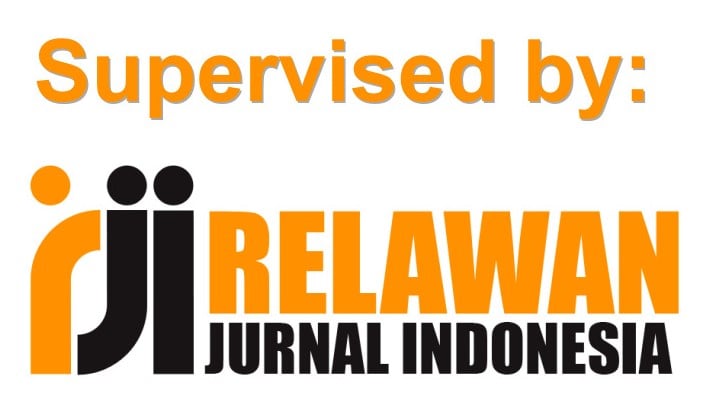Kondisi Psikologis Narapidana Narkotika Di Lembaga Pemasyarakatan Narkotika Klas II Karang Intan, Martapura, Kalimantan Selatan
DOI:
https://doi.org/10.18592/jsi.v5i1.1353Keywords:
Kondisi Psikologis, Narapidana Narkotika, Lembaga PermasyarakatanAbstract
This study aims to describe the psychological condition of inmates during being in Narcotics Correctional Institution II Karang Intan, Martapura, South Kalimantan. The research method used is qualitative research. Method of taking data by using interview and observation. The main research subjects were two prisoners, HRS and BSR were supported by two informants, prison officers and counselors as a complementary source of data. From the results of research can be described psychological condition of inmates are divided into four aspects, namely cognitive aspects, affective aspects, social aspects and psychomotor aspects (behavior). The research findings can be summarized as follows, on the cognitive aspect can be described prisoners are susceptible to cognitive dysfunction this is related to the ability his perception, the ability to catch and often lose concentration, while the affective aspects of deep sadness, suspicion and excessive alertness, And anxious, to social aspects show behavior tend to withdraw from association among fellow inmates, often sat pensive and become loners or close themselves. In the psychomotor aspect can be seen from maladaptive behavior, can manisfestation in the form of behavior of sleeplessness, lack of spirit and loss of interest, even the desire to hurt until the desire to end life.References
Afrinisna, R.Y. 2013. Penyebab dan kondisi psikologis narapidana kasusnarkoba pada remaja. e-journal. Semarang, Universitas Ahmad Dahlan. portalgaruda.org
Bonar Hutapea. 2011. Terpenjara dan Bahagia? Psychological Well-Being Pada narapidana Ditinjau dari Karakteristik Kepribadian.Proceeding Pesat (Psikologi, Ekonomi, Sastra, Arsitektur dan Sipil. h. 1858-2559.
Indiyah . 1997 .”Hubungan antara religiusitas dan kepercayaan diri dengan kecemasan pada narapidana menjelang masa bebas.” Tesis. Yogyakarta : UGM. Tidak diterbitkan.
Kristianingsih, S. A. 2009. Pemaknaan Pemenjaraan pada Narapidana Narkoba di Rumah Tahanan Salatiga. Humanitas. Vol 6 No. 1, 1-15.
Liwarti. 2013. Hubungan antara pengalaman spritual dengan psychological Well-Being pada penghuni LembagaPermasyarakatan. Jurnal Sains dan Praktik Psikologi.1,77-88.
Morgan, C.1981. Developing mental health service for local jails.Criminal Psychology: Science and Practice, 5,h. 291-313.
Purnianti, M.S. Supatmi, Tinduk, N.M.M. 2003. Analisa Situasi Sistem Peradilan Pidana Anak (Juvenile Justice System) di Indonesia.
Sarwono, S. W., 2011. Psikologi Remaja Edisi Revisi, Jakarta: PT. Rajagrafido Persada.
Siahaan, G.T. 2008. Hubungan Harga Diri dengan Makna Hidup pada Narapidana. Sripsi tidak diterbitkan Universitas Sumatera Utara
Sumardi, Arsyah. 2013. Jenis-Jenis Narkoba Jakarta: Citizen Reporter. h. 21
Siti Thohurotul Ula. Makna Hidup bagi Narapidana. Jurnal Hisbah. Vol.11, No.1,Juni 2014. h.16
UNODC. 2012. World Drug Report 2012. Online http://unodc.gov/word-drugs-repoort-2012. Diakses pada tanggal 10 April 2017
http://www.batok.co/2016/04/19/data-bnn-menunjukkan-peningkatan-besar-pengguna-narkoba-pasca-eksekusi-mati-pengedar. Di akses pada tanggal 20 April 2017
http://www.cendananews.com/2016/12/jumlah-pengguna-narkoba-di-kalimantan.html. Di akses pada tanggal 20 April 2017
United Nation Office on Drugs and Crime. 2010. World Drug Report 2014 https://www.unodc.org/documents/wdr2014/World_Drug_Report_2014_web.pdf
http://portalindonesianews.com/posts/view/1626/tahun_2015_jumlah_penggunanarkoba_di_indonesia_capai_5_juta_orang#sthas.1sbBk1JA.dpuf
http://malangvoice.com/banyak-napi-narkoba-stres/. Diakses ada tanggal 21 April 2017
Downloads
Published
How to Cite
Issue
Section
License
Authors who publish with this journal agree to the following terms:
- Authors retain copyright and grant the journal right of first publication with the work simultaneously licensed under a Creative Commons Attribution License that allows others to share the work with an acknowledgment of the work's authorship and initial publication in this journal.
- Authors can enter into separate, additional contractual arrangements for the non-exclusive distribution of the journal's published version of the work (e.g., post it to an institutional repository or edit it in a book), with an acknowledgment of its initial publication in this journal.
- Authors are permitted and encouraged to post their work online (e.g., in institutional repositories or on their website) before and during the submission process, as it can lead to productive exchanges, as well as earlier and greater citation of published work (See The Effect of Open Access).





















